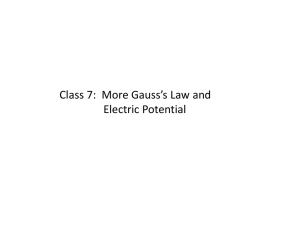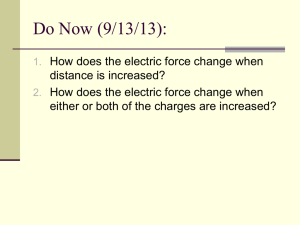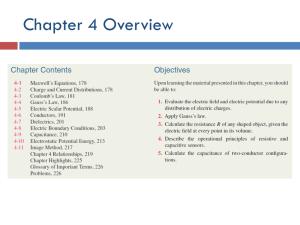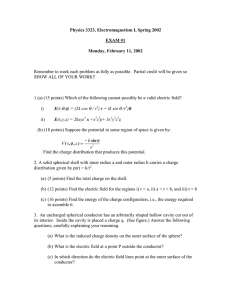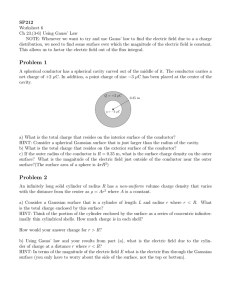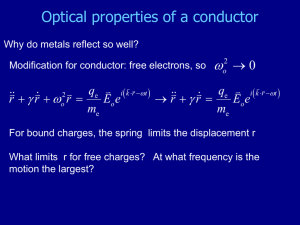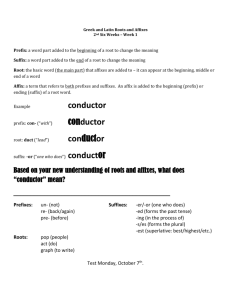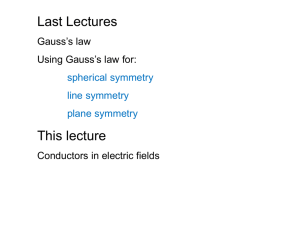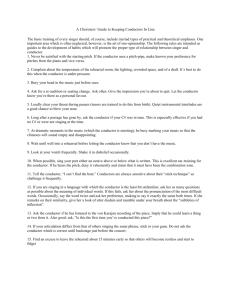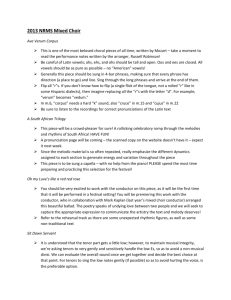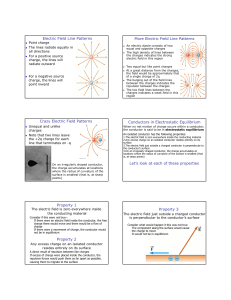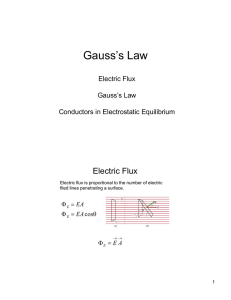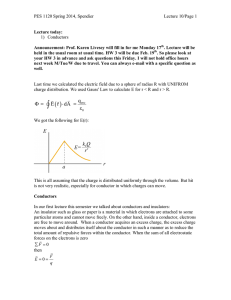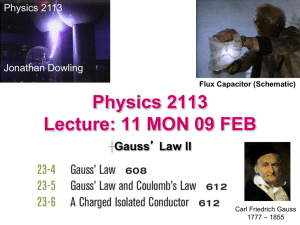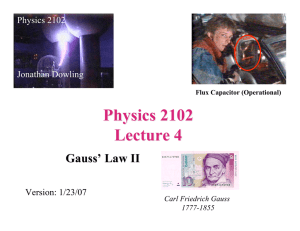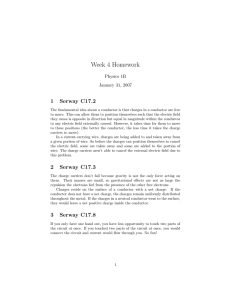Lecture 6
advertisement
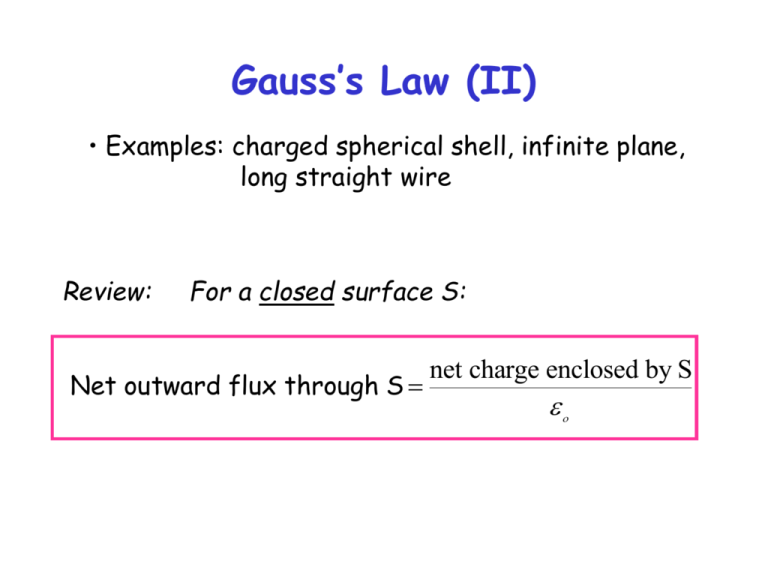
Gauss’s Law (II) • Examples: charged spherical shell, infinite plane, long straight wire Review: For a closed surface S: Net outward flux through S net charge enclosed by S Calculating E for symmetric charge distributions 1) Use symmetry to sketch the behaviour of E (possible only for very symmetric distributions) 2) Pick an imaginary “Gaussian surface” S 3) Calculate the flux through S, in terms of an unknown |E| 4) Calculate the charge enclosed by S from geometry 5) Relate 3) and 4) by Gauss’s Law, solve for |E| Example: Uniformly-Charged Thin Sheet charge unit area E is uniform + + + + + + + + + + + Gaussian surface Find E due to an infinite charged sheet Solution Example: Infinite Line Charge (Long thin Wire) r + + + + + + + L charge constant unit length Find E at distance r from the wire + + Solution Conductors (in Electrostatic Equilibrium) 1) E 0 inside a conductor. 2) E surface just outside a conductor. 3) Any net charge on a conductor resides on the surface only. Example: Hollow Thin Spherical Shell Total charge + Q + + + r a + r + + + P2 + Find E outside at P1 : (r > a): Find E inside at P2 : P1 + (r < a): + + + Solution Consequences if E was not zero: 1) If E 0 , charges would move!!! 2) If E|| 0 , charges would move!!! E Ell + E=0 inside 3) E 0 inside, so any Gaussian surface inside the conductor encloses zero net charge. + + + + + + + + + + + + + + + + + + + + + + + + + + + + 0 So net charge =0 Since E = 0 everywhere . + - - + conductor - E 0 - + + Surface Charge Density on a Conductor E dA1 + + + + dA2 E=0 + inside What is E at the surface of the conductor? charge unit area Solution Example: • Metal ball of radius R1 has charge +Q Metal shell of radius R2,and R3 has total charge -3Q ) • Find: charges on each surface. (and E) R3 R1 -3Q +Q R2 Solution Quick Recap Conductor: E Infinite Sheet of charge: At surface of conductor E 2 Why is the lower value half of the upper?
